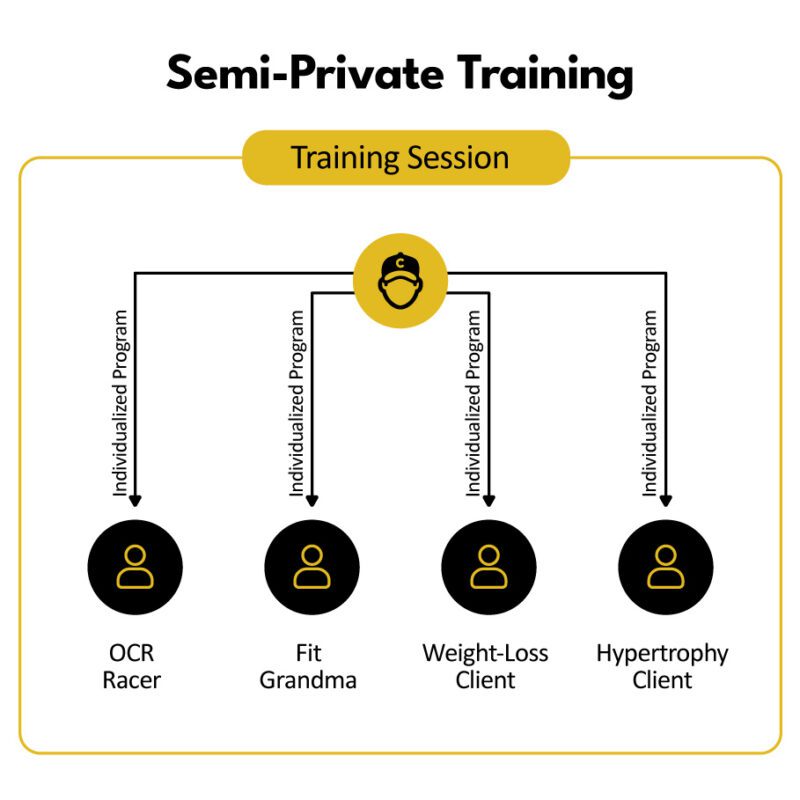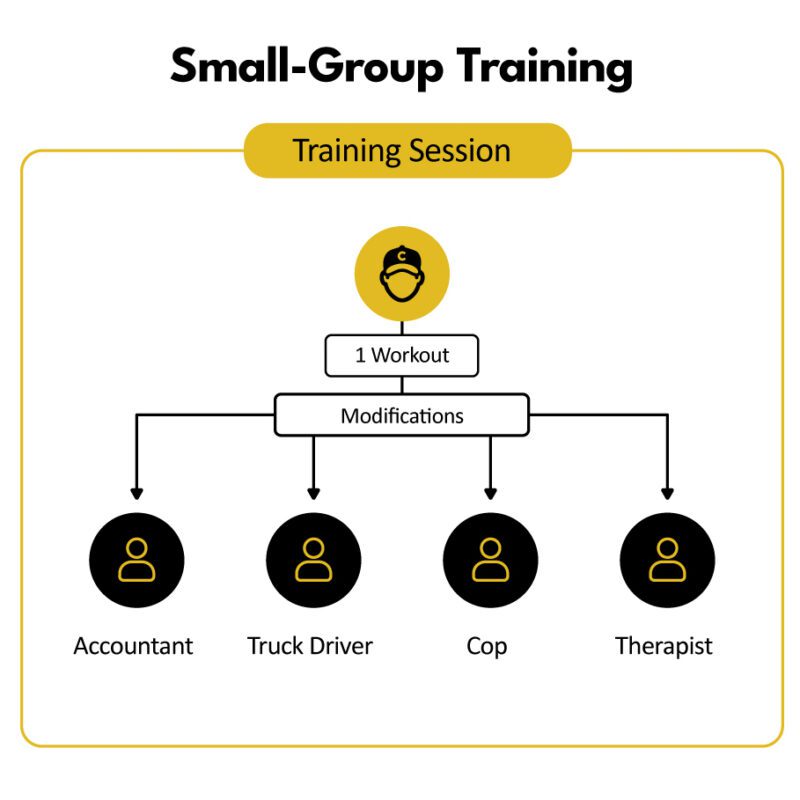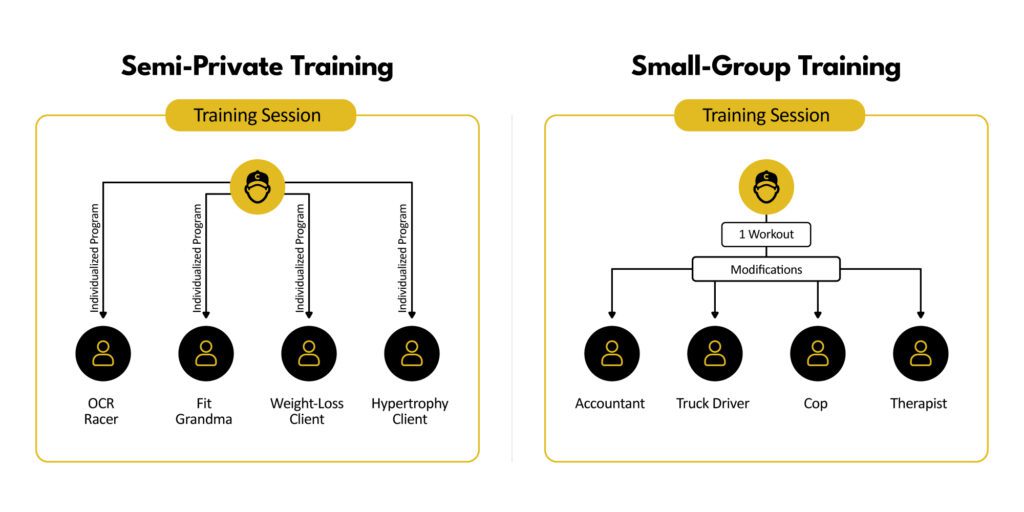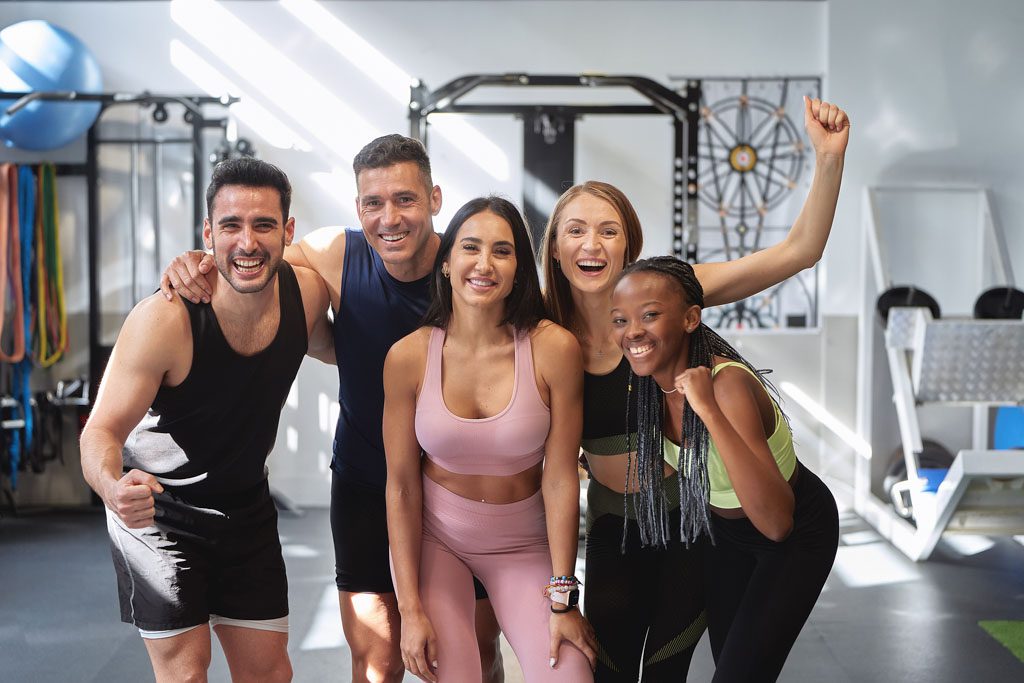High-value services are an important part of a profitable gym.
Personal training is at the top of the list: It produces the best results for clients and greatly increases the gym’s average revenue per member (ARM) and revenue.
Two other high-value services top gyms are using:
- Semi-private training
- Small-group training
I get a lot of questions about the differences between these two services, both from our clients and entrepreneurs in our Gym Owners United group.
I’ll lay out the details for you below so you know how to use these services to boost your ARM.
Semi-Private Training

Here are the key details:
- Each client has an individualized program.
- Clients train in sessions in which two or three other semi-private clients are present, but they do not do the same workout or a version of the same workout.
- Semi-private clients can have dramatically different goals, skill levels and training histories. Bob, 25, might be deadlifting in prep for his powerlifting meet while Tim, 61, is doing bike intervals to prepare for a cycling race.
- They share a space and a coach, but no elements of their programs are shared with the other clients in the session.
- A skilled coach delivers individualized programming to each client by dividing attention and moving about the group. This is essentially “personal training with other PT clients present.”
- Each client gets an individualized program and a lot of direct attention—far more attention than they would receive in a big-group setting. They get less attention than they would in a one-on-one setting.
Semi-private training is more valuable than group and small-group training, but it should be priced below one-on-one training.
Pricing strategy: Double your current PT rate and divide by three to get your semi-private session rate. Example: $100 an hour x 2 divided by 3 = $66.66 per session per semi-private client.
Coaches can earn 33 percent of session revenue to start and eventually work their way to a max of 44 percent (4/9ths).
Huge triple win:
- Clients can buy semi-private packages that give them access to individualized programming without paying PT rates.
- Gym owners can take in $200-$250 an hour with four clients in a session.
- Coaches can earn more than $60 an hour in a four-client session.
Small-Group Training

Here’s what you need to know:
- All clients follow the same program and do the same workout at the same time. The coach only creates one general programming stream.
- The coach provides modifications for each participant as needed, but the clients all do a variation of the same workout. Bob might do 5 sets of 5 deadlifts with a barbell while Tim does 5 sets of 5 deadlifts with kettlebells placed on raised platforms.
- The class size has a hard cap that allows the coach to give each person much more attention than they would receive in a general group class. But clients must feel like they are receiving dramatically increased contact with a coach. If they feel like they get the same amount of attention as they would in a larger class, you will have problems.
- The program should be priced above group training and below semi-private training.
A potential sticking point: In our “2024 State of the Industry” report, the average class size across all Wodify gyms was 6.34 people. That means some classes in “big-group gyms” have only two or three people. This can make it very difficult to present small-group training as an option—it’s already happening by default in many gyms that sell group coaching.

Learn More
The gyms that earn spots on our ARM leaderboards use high-value services without fail. You can’t get to $400 or $500 ARM by offering big-group fitness alone.
But if you offer group classes, develop and market a strong PT program, and complement it with semi-private or small-group training, you have a solid three-tier package that contains two high-value services. Your ARM is going to increase significantly.
So what should you do?
Two-Brain clients: We have an entire Semi-Private Coaching course. Talk to your mentor to determine if you should access the course now or prioritize another aspect of your business. If you and your mentor decide to develop a new high-value revenue stream, we have an exact plan to make it happen fast.
If you don’t work with us yet, check out this video with Two-Brain mentor Brian Bott:
Then book a call here to find out how a mentor can help you build a strong, profitable business.

